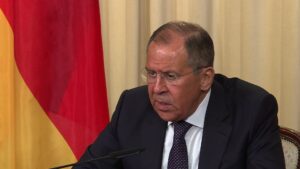Ramadan: A month of hustle and bustle in Indian markets
NEW DELHI (AA) – The holy month of Ramadan has brought hustle and bustle to cities and towns in India where centuries-old markets remain open almost 24 hours to serve delectable foods.
Since Ramadan began at the end of March, the streets of the national capital New Delhi’s old parts have been bustling with visitors.
This year markets are receiving more visitors than last year, Akram Quraishi, the owner of a popular eatery in old Delhi, shared.
“We see people visiting the markets until early morning… before morning prayers,” he said, adding that “foreigners are also visiting in good numbers.”
Everyone is happy and enjoying the Ramadan activities, he remarked.
The old Delhi is the central part of the city that was built in the early 17th century by Mughal emperor Shah Jahan, who made it the kingdom’s capital in 1648 and named it Shahjahanabad.
Several eateries in the walled city serve the best Mughlai cuisine – a combination of Indian and Persian food – that feature traditional flavors, such as chicken-rice biryani, kebabs, kofta (meatballs), pulao or pilaf (rice cooked in meat), and tandoori, a cylindrical clay oven in which food is cooked.
The most appealing is the gathering of Muslims inside the courtyard of India’s historic Jama Masjid, the main mosque in Delhi, where thousands of people break their fast while sitting on mats placed in lines.
People bring fruit from their homes to break their fast with family members. “We come here once a year during Ramadan to break the fast with our families,” Najeeb Ahmad, 35, from Noida City, a town on the outskirts of Delhi, told Anadolu.
“People . . . come here every day, and this is a festive time for everyone,” he said.
Outside the mosque, vendors entice customers with unique dishes and desserts such as Imran Ahmad’s watermelon Sharbat e Mohabbat, a delectable drink.
“I come here every evening and sell hundreds of glasses,” he said.
Multiple cuisines
Restaurants serving halal foods are doing well across the country, as Muslims prefer non-vegetarian food for dinner after breaking their fast.
Haleem is one of the favorite dishes of the people of Hyderabad, the capital of Telangana state in southern India. It is made from a thick mixture of ground wheat flour, meat, and lintels cooked with traditional Indian spices. People from nearby areas visit the city to enjoy Hyderabadi Haleem.
In Hyderabad, Ramadan and Haleem are synonymous, according to Mohammed Abdul Majeed, owner of 30 restaurants in the city serving the popular dish. “We have outlets in almost every part of the city,” he said.
Apart from that, there is a wide variety of dishes available in other places, ranging from chicken kebab to mutton biryani.
Prices up
With rising inflation in Indian markets, fruit prices have shot up as well, which dealers say Muslims prefer when breaking the fast.
Watermelon and muskmelon are plentiful in markets, but their prices have more than doubled during Ramadan.
Indian and foreign dates have flooded almost all markets as their demand doubled during the fasting month.
“We have dates of almost all qualities coming from different Middle Eastern countries. However, prices for dates have increased like other eatables,” said Azam Khan, a date trader based in Bhopal, a city in the central Indian state of Madhya Pradesh.
“From our side, we’re taking less profit,” he claimed.
Inflation is affecting everyone, and people think twice before buying anything this Ramadan, said Shafiq Ahmed, a Bhopal resident.
“Muslims spent more during Ramadan, but many things are out of reach for the common man at this time. All essential daily products are expensive. During Ramadan, the prices of fruits and dry fruits increased by nearly 30-40%,” Ahmed said.
Despite fasting from dawn to dusk, Ramadan invigorates people, bazaars, and eateries. However, inflation and the two days of anti-Muslim riots that began on March 30 in West Bengal during processions by members of Hindu right-wing groups and spread to three other states sapped those energies.
In clashes in Bihar, West Bengal, Maharashtra, and Gujarat, at least two Muslims were killed and dozens were injured.








